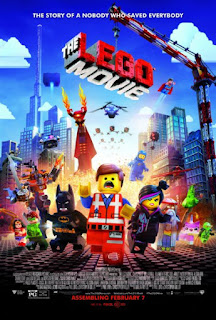Film Review: Roman Polanski's "Repulsion" (1965)
Figure 1. Repulsion Movie Poster
Roman Polanski’s “Repulsion” (1965) is certainly a spectacle to behold. It plays on a very psychological level in a sense that the main character, Carol, played by Catherine Deneuve, a young and beautiful woman, who at first may seem rather coy and reserved, but is actually rather repulsed by men, causing her to manifest this deep set disgust to manifest and allow her to slowly descend into madness. Set in swinging London, the story follows Carol as her mind spirals to the point of homicidal madness.
This disturbing drama is reflecting of Polanski’s methods of art house film, which creates these shocking visual effects that really set the atmosphere of making the audience uncomfortable. It’s as if each little thing that makes Carol tick, can now make the audience tick as of the immersive effect that is being experienced. As Mat Viola emphasises in their review, “Nobody but Polanski could make dripping water, ticking clocks, buzzing flies, clanging bells, ringing telephones and the distant playing of piano scales seem so disturbing, yet the persistent use of these nerve-racking aural effects, slightly amplified to reflect Carol’s distorted perception, create an atmosphere of unbearable edginess.” (Viola, 2008) It’s with these techniques that we can truly experience what the character is feeling at the time. With close up camera shots and dodgy soundtrack, the film almost makes the viewer feel claustrophobic and dazed with the absurdity of the feature.
Figure 2. Walls Begin to Crack
The visuals of the film really depict the way the character develops mentally and emotionally. A fine example would be that of the apartment that Carol resides in with her sister. Her environment ‘changes’ around her, deteriorating along with her mind. As Bosely Crowther emphasises, “Distortions in the rooms of the apartment tacitly reveal her mental state. Phantom arms that punch through the walls and seize her visualize her nightmare insanity.” (Crowther, 1965) As the film progresses, it is noticeable that the walls begin to crack, much like Carol herself, and with the rooms expanding and contracting, it is emphasised how distorted and complex her mindset is. Essentially, symbolism plays a large part in putting across the films true intentions. From the rotting rabbit carcass to when she applies lipstick as if to be ‘getting ready for her attacker to arrive’, it is clear to see what Carol is thinking, but we never fully understand why she does.
Figure 3. Male Hands Bursting Through the Walls
The main climax of the film was when Carol killed the two men who pursued her, one being a potential suitor smitten by her, and the other being her sleazy landlord trying to advance. Both murders were carried out within the apartment, as most of the film was, but, as Steve Biodrowski points out, “We are denied even the satisfaction of a last-minute revelation regarding Carole’s unhinged mentality. Polanski’s camera merely zooms in on a photograph of Carole as a young girl, staring angrily at her father, suggesting that the seeds of her madness were planted in childhood, perhaps buried forever, never to be fully explained.” (Biodrowski, 2009) It is unclear as to how and why Carol has been lead to behave and think in these certain ways. Some critics speculate that the panning in on the photograph displays the potential that her father may have possibly been the stimulus of her hatred towards men, as he could have sexually abused her at a young age. But Polanski denies these accusations, he merely wanted to put across that she was effected with this mentality from childhood onwards.
Figure 4. Carol's Family Photograph
Although “Repulsion” (1965) may not be the most fast-paced film, the subtext and symbolism, combined with a striking soundtrack and credible acting, are what makes the feature a notable performance. It’s written within the horror genre, but with it’s own artistic twist on the plot and the aesthetic of the film, conjuring up this suspense filled feature that doesn’t fail to shock. It may not be to every critic’s taste, but it is certainly a film that should be experienced.
Bibliography:
Viola, M. (2008) ‘Repulsion (Roman Polanski, 1965)’ (26.01.08) In: http://notesofafilmfanatic.com (2008) [Online] At: http://notesofafilmfanatic.com/?p=18 (Accessed on 09.12.14)
Crowther, B. (1965) ‘Movie Review Repulsion (1965) REPULSION’ (04.10.65) In http://www.nytimes.com/ (1965) [Online] At: http://www.nytimes.com/movie/review?res=EE05E7DF1739E471BC4C53DFB667838E679EDE (Accessed on 09.12.14)
Biodrowski, S. (2009) ‘ Repulsion (1965) - Horror Film Review’ (27.07.09) In: http://cinefantastiqueonline.com/ (2009) [Online] At: http://cinefantastiqueonline.com/2009/07/repulsion-1965-horror-film-review/ (Accessed on 09.12.14)
Illustrations:
Figure 1. 'Repulsion Movie Poster' (1965) [Movie Poster] At: http://upload.wikimedia.org/wikipedia/en/0/05/Repulsion.jpg (Accessed on 09.12.14)
Figure 2. 'Walls Begin to Crack' (1965) [Movie Still] At: http://onehundredimportantfilmschallenge.files.wordpress.com/2011/05/repulsion_shot25l.jpg (Accessed on 09.12.14)
Figure 3. 'Male Hands Bursting Through the Wall' (1965) [Movie Still] At: https://aaastern.files.wordpress.com/2011/08/repulsion.jpg (Accessed on 09.12.14)
Figure 4. 'Carol's Family Photograph' (1965) [Movie Still] At: http://s3.amazonaws.com/criterion-production/posts/2044-5d1c0e6713202381b41b499aa9890d5a/One_Scene_Repulsion_Still_video_still.jpeg (Accessed on 09.12.14)







Through review Chelsea :)
ReplyDeleteDon't forget that your bibliography should be organised alphabetically by the author's surname.